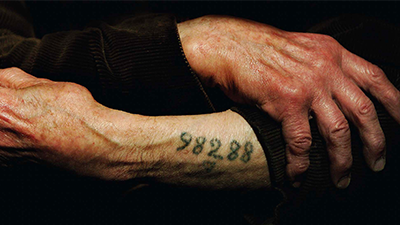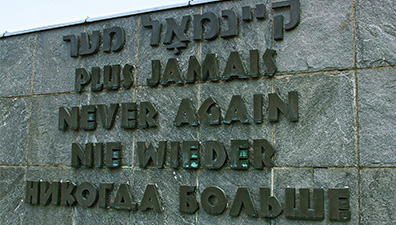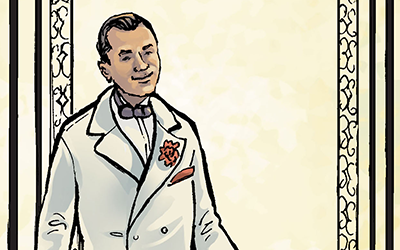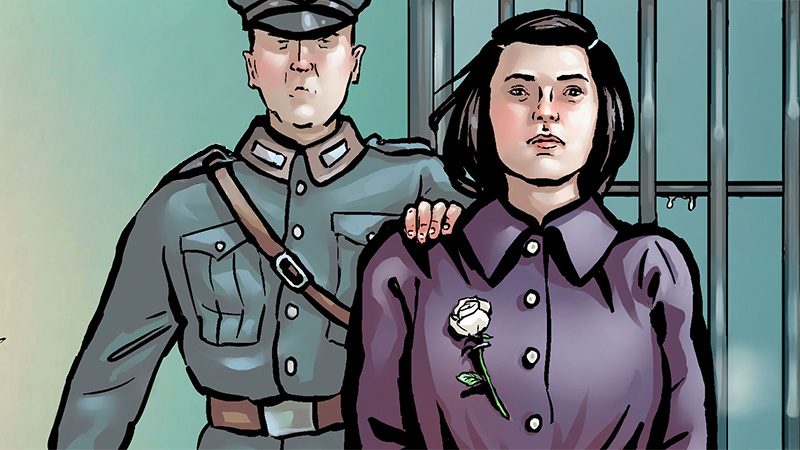Mass Atrocities After 1900
Driving Question: What were the causes and effects of mass atrocities after 1900?
Many had hopefully called World War I “the war to end all wars.” Three decades later, as the dust settled on World War II, many things had ended—among them the colonial system, somewhere between 70 and 85 million lives, and any sense of security that might have come with living in a world where the Holocaust had not happened. In this lesson, you will analyze multiple mass atrocities that occurred during the twentieth century, keeping in mind that the best way to guard against future atrocities is to understand what caused them in the past.
Learning Objectives
- Explain the various causes and consequences of mass atrocities in the period from 1900 to the present.
- Understand and evaluate the causes, scale, and consequences of mass atrocities after 1900.
- Analyze primary source documents to evaluate the economic crises and how governments responded in the interwar period.
Vocab Terms:
- antisemitism
- atrocity
- casualty
- concentration camp
- genocide
- total war
Opener: Mass Atrocities After 1900
To teach this lesson step, refer to page 3 of the Lesson 7.8 Teaching Guide.
Our Openers and Closers Guide provides more information about these short, but important activities at the beginning and end of each lesson.
Who is to blame? It is a question that sometimes results in some difficult truths.
Armenian Genocide
To teach this lesson step, refer to page 5 of the Lesson 7.8 Teaching Guide.
During World War I, the Ottoman government targeted Armenian communities, claiming they were a national threat. From 1915 to 1917, over one million Armenians were killed through forced displacement, labor camps, and mass executions, sparking international outrage.
-
Guiding Questions
-
Before you watch
Preview the questions below, and then review the transcript.
While you watch
Look for answers to these questions:
- How does this video define genocide?
- What were millets?
- Why did the Ottoman rulers begin to view Armenians as a threat?
- Why did tension between Armenians and the state increase with the establishment of the new Young Turk government?
- How did the international community respond to the genocide?
After you watch
Respond to the following questions:
- To what extent does this video explain the various causes and consequences of mass atrocities in the period from 1900 to the present?
- To what extent did World War I cause the Armenian Genocide? What evidence would you need to answer this question?
- Could any of the transformations you encountered in the previous units have led to these atrocities, even without the war?
Key Ideas
The Holocaust
To teach this lesson step, refer to page 6 of the Lesson 7.8 Teaching Guide.
The horror of the Holocaust must never be forgotten, not least because remembrance is essential in preventing such a tragedy from ever happening again.
-
Guiding Questions
-
Before you read
Preview the questions below, and then skim the article. Be sure to look at the section headings and any images.
While you read
Look for answers to these questions:
- What policies made persecutions of Jewish German citizens official?
- What was Kristallnacht?
- What was the T4 program?
- Who committed the atrocities of the Holocaust?
- How does the author explain the willing participation of women in fascist regimes, even though those regimes that limited their public and private freedoms?
After you read
Respond to the following questions:
- To what extent does this article explain the various causes and consequences of mass atrocities in the period from 1900 to the present?
- The author argues that “We need to be on the lookout for when we, too, become ‘used to’ the casual oppression of others, when our everyday compassion for people different from us disappears.” Can you think of examples from your own life or from your society of people getting “used to” bad treatment of others? Are there ways in which we can act to avoid repeating this kind of atrocity?
Why Does Genocide Still Happen?
To teach this lesson step, refer to page 7 of the Lesson 7.8 Teaching Guide.
While we hoped for never again, many of us are responsible for Teaching that genocide didn’t end with the Holocaust. See what strategies other teachers use to address these horrifying events.
Since the end of World War II and the establishment of the United Nations, genocides have continued to occur around the world. Historian Bennett Sherry asks why, and arrives at some unsettling conclusions including international indifference.
-
Guiding Questions
-
Before you read
Preview the questions below, and then skim the article. Be sure to look at the section headings and any images.
While you read
Look for answers to these questions:
- The United Nations passed the Convention on the Prevention and Punishment for the Crime of Genocide in 1948. When was it first enforced and in what context?
- How did the Cambodian genocide relate to the role of the American military in the Vietnam War?
- How did the United States and China end up favoring the Khmer Rouge?
- How do the United Nations Security Council’s permanent members prevent decisive action to stop or mitigate genocides?
- Sherry notes several reasons for the international community’s failure to prevent or mitigate genocides, including the UN Security Council’s veto structure, international indifference, and a reluctance to fund aid efforts. But what commonly cited excuse for inaction does Sherry flatly reject and why?
- Sherry concludes with quotes from former US Ambassador to the UN, Samantha Power, who asserts that ongoing genocide is proof that the postwar system “is working.” What does she mean and how does Sherry demonstrate this?
After you read
Respond to the following questions:
- What are the causes and consequences of mass atrocities after 1900?
- Sherry defines genocide very simply as “organized murder.” Do you think this is sufficient? What are the strengths of such a simple definition? How might this definition fail to consider the complexity of genocide in history? How would you support this simple approach to characterizing genocide, and how might you challenge this approach? How would you extend this definition?
- Do you agree with Sherry’s characterization of the international community’s response to genocide? While reading, what did you think about the UN Security Council permanent members’ decisions to obstruct decisive action in most instances of genocide?
Graphic Biographies: Manuel Quezon and Sophie Scholl
To teach this lesson step, refer to page 9 of the Lesson 7.8 Teaching Guide.
Want to celebrate more diverse voices in your classroom? Read the blog post Graphic biographies: Bringing Black individuals into the world history classroom.
People display compassion and courage in different ways. For Manuel Quezon and Sophie Scholl, it meant doing the right thing, even if that meant receiving criticism and harsh punishments.
-
Guiding Questions
-
Before you read
Preview the questions below, and then skim the comic, paying attention to things like prominent colors, shapes, and types of text and fonts. How do you know where to start and in which direction to read? What’s in the gutters (the space between panels)? Who or what is the focus of the comic?
While you read
Look for answers to these questions:
- Where did Manuel Quezon live, and what was his position in 1935?
- Why did Quezon decide to admit 1,300 Jewish refugees in 1935?
- What evidence does the author provide that it was Quezon’s conscience that led him to accept refugees?
- The artist says that the cards on the table of the poker game represent “a paper wall” that restricted the ability of Jewish refugees to find a place to live. How does the art signify that Quezon was moving that paper wall to the side?
After you read
Respond to the following questions:
- To what extent does this article explain the various causes and consequences of mass atrocities in the period from 1900 to the present?
- How does this biography of Quezon support, extend, or challenge what you have learned about the Holocaust and the atrocities of the Second World War?
-
Guiding Questions
-
Before you read
Preview the questions below, and then skim the comic, paying attention to things like prominent colors, shapes, and types of text and fonts. How do you know where to start and in which direction to read? What’s in the gutters (the space between panels)? Who or what is the focus of the comic?
While you read
- Why did Sophie and her brother become disenchanted with the Nazi regime?
- How did the White Rose resist the Nazi government?
- Why is the White Rose still commemorated today?
- How does the artist use art and design to tell the story of the White Rose and their acts of resistance during World War II?
After you read
Respond to the following questions:
- To what extent does this article explain the various causes and consequences of mass atrocities in the period from 1900 to the present?
- Do you think the form of resistance that Sophie and the White Rose engaged in was effective? Why or why not?
Closer: Mass Atrocities After 1900
To teach this lesson step, refer to page 10 of the Lesson 7.8 Teaching Guide.
The OER Project Writing Guide emphasizes the importance of informal writing in the course.
Do you notice a pattern in this unit? Let’s explore it in the Themes Notebook!







